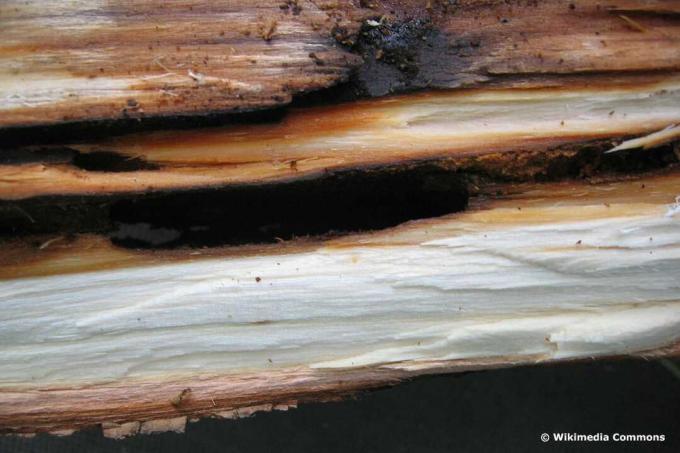
table of contents
- Location
- Substrate
- planting
- to water
- Fertilize
- Cut
- Repot
- Diseases and pests
- Multiplication
- frequently asked Questions
The corkscrew willow in the bucket looks very attractive with its twisted branches. As a free-standing tree this one Willow species it is only suitable for large gardens. A pot culture is an alternative for small gardens.
In a nutshell
- actually a large shrub or tree
- deciduous and hardy
- More maintenance-intensive in pots than outdoors
- needs very large tubs
- must be cut often
Location
The corkscrew willow prefers to be in a sunny place. Protection from strong winds is also important, while an airy space ensures that the tree remains healthier.

Substrate
Willows are quite undemanding. A loamy soil is just as tolerated as a sandy one. The substrate should be permeable so that the tree does not stand in water. Sufficient nutrients are also necessary in the pot because the tree cannot take care of itself due to the limited space.
planting
This is how you can plant the corkscrew willow in the bucket:
- Choose a large bucket right from the start
- Capacity from 70 liters
- Ensure drainage
- Cover existing holes with loose material so that soil does not fall out
- Fill in enough substrate that the tree is at the same depth as when you bought it
- Take the tree out of its old pot, check the root ball
- Remove dried, dead or damaged roots
- Place the tree in the middle of the bucket
- possibly attach a support
- Fill in the soil, especially between the roots, press down well
- pour vigorously

to water
While the tree is self-sufficient in the field, it is absolutely dependent on a good water supply in the bucket. Daily watering is necessary on hot days. A mulch layer lowers evaporation and keeps the soil moist longer.
Note: Remove any weeds that are growing in the pot in good time; they not only remove water from the tree, but also nutrients.
Fertilize
The corkscrew willow grows very quickly and therefore needs an even supply of nutrients. When planting, compost can be mixed under the ground, later mulching or regular fertilization with the right fertilizer over the irrigation water.
Cut
Pruning measures are essential for corkscrew willows in the pot, otherwise they will quickly become too big. You don't have to be particularly careful here, willows quickly drift through again vigorously.
- When: best in the cold season, but also possible at any other time of the year
- especially remove old, diseased, damaged or dead branches
- then thin out the tree so that a loose crown is created
- Shorten branches so that they fit the size of the bucket

Repot
Because the willow grows so quickly, it is necessary to repot it frequently. Usually in spring. However, it can make sense to repot them more often in the first few years. Signs of a pot that is too small:
- Leaves droop or turn yellow (lack of nutrients)
- Tree does not grow any further
- Roots can be seen on the surface of the earth or grow over the edge of the pot
Repotting is done just like planting. Only a larger bucket is chosen.
Diseases and pests
Diseases often occur when the tree is not cared for well. Too dense growth ensures that the leaves do not dry off well after rain. Fungal diseases can develop.
- Willow scab (brown, dried up leaves)
- Marssonina mushrooms (withered shoot tips, growths in the wood)
Some pests also like to attack willow trees.
- Willow borer (drills into the wood and lays eggs in it, larvae eat the wood)
- Willow leaf beetle (eats on the leaves)

Multiplication
The easiest way to propagate corkscrew willows is to use cuttings. Use healthy shoots from the pruning for this. Prune these again before planting. Then just put it in the ground and press it firmly on.
Note: As an alternative, root the cuttings in a glass of water and then plant them.
frequently asked Questions
It is actually difficult to successfully cultivate a corkscrew willow for a long time in the bucket. Frequent pruning is particularly important. If there are no longer any larger pots, the roots must also be pruned.
Not outdoors and not necessarily in pots either. But it doesn't hurt to put the pot on an insulating surface and wrap it with fleece.
As long as the entire tree is not affected, it helps to cut it back completely. The trunk is cut about a hand's breadth above the ground. If the tree is still vital enough, it will sprout again.
